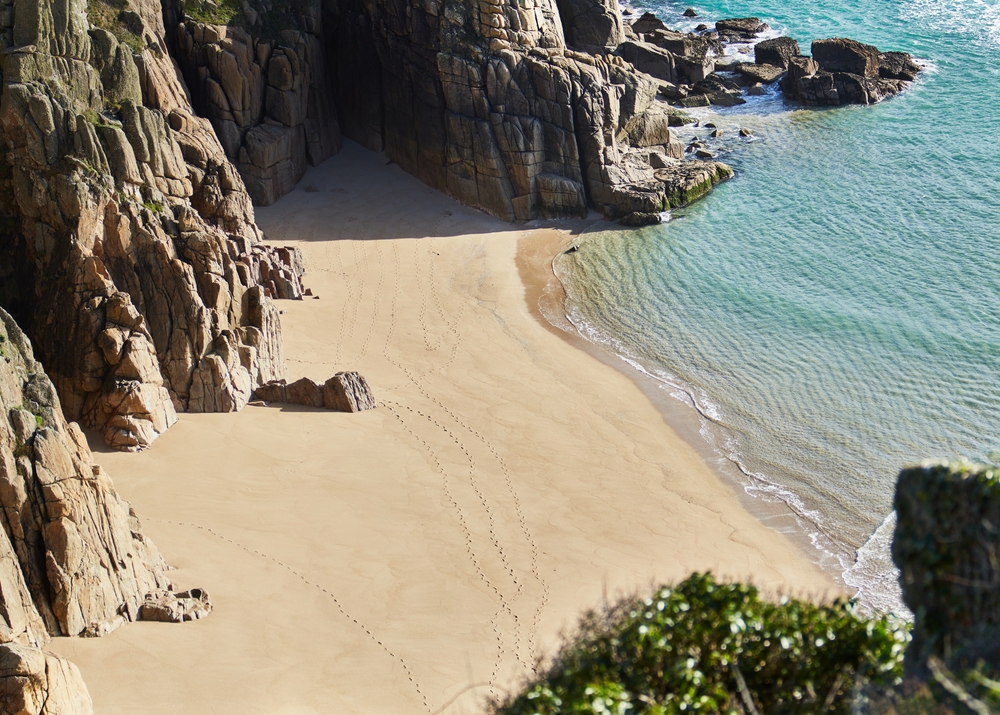Porthcurno is considered by many to be the most beautiful cove in Cornwall, its emerald green, crystal clear water and impossibly white sands give the impression of a tropical paradise rather than a British beach! When the writer J. T. Blight visited in 1860 he observed that the sand was made entirely of crushed sea shells “so delicate and beautiful” and “left so smooth by the waves that it is almost a pity to make footprints.”
Close to the famous Minack Theatre this beach is well-known and much loved by visitors but strangely its history is often overlooked, and is nearly as diverting as those gentle lapping waves.
Porthcurno is thought to mean “Cornwall’s Port” or “the Cornish Cove” and the name enshrines the ancient Cornish word for the Duchy – Kernow. Some 400 years ago the 6th century Celtic saint, St Leven, is said to have landed in Porthcurno and built his home at Bodellan on the cliffs above the cove. Legend has it that he tried to build his first church there but each night some devil or evil spirit would move the stones he had laid to the site of the present St Leven church a little down the coast.
A smugglers cove
The beach also figures in the records of smuggling activity in the area, as the channel coast was closer to mainland Europe it made the obvious choice for landing contraband goods. In about 1815 a boat called the Rose out of Coverack brought back 200 tubs of spirits from Roscoff. As they tried to land at Gunwalloe the crew were warned that they had been spotted by the Revenue men and set sail again. They headed from Porthcurnoe instead and managed to unload about 50 barrels before they again saw a signal on shore telling them there was danger. The landing party apparently hid behind a hedge until the coast was clear then carried the spirits to Treen before hiding it away with the help of a local farmer!
A strange piece of folklore related to the cove is thought by some to have been the invention of these local smugglers trying to keep prying eyes from seeing what was going on at Porthcurno. There is a strange tale of a spectral ship that rises up out of the sea at dusk and glides silently out of the water and up across the sand. It is said that the black square-rigged ghost ship is an ill omen and anyone who sees it is in for a spell of bad luck.
Porthcurno, once the heart of international communications
And finally, as strange as it may seem now this unassuming beauty spot on the wild Cornish coast was once at the very heart of international communications. In June 1870, the ‘Falmouth, Gibraltar & Malta Telegraph Company’ belonging to John Pender landed the final section of the first Great Britain-India submarine cable here at Porthcurno. The first message from England to Bombay was sent on 23rd June that year and in the years that followed further cables to Newfoundland, France, Spain, and Gibraltar were all landed at Porthcurno, making it the unlikely gateway to the British Empire.
Its an amazing thought as you watch the waves lapping on the peaceful sandy shore of this stunning Cornish beach!

